SA Photonics introduced their new PilotVision augmented reality (AR) head mounted display (HMD) at EAA AirVenture Oshkosh 2019. According to SA Photonics:

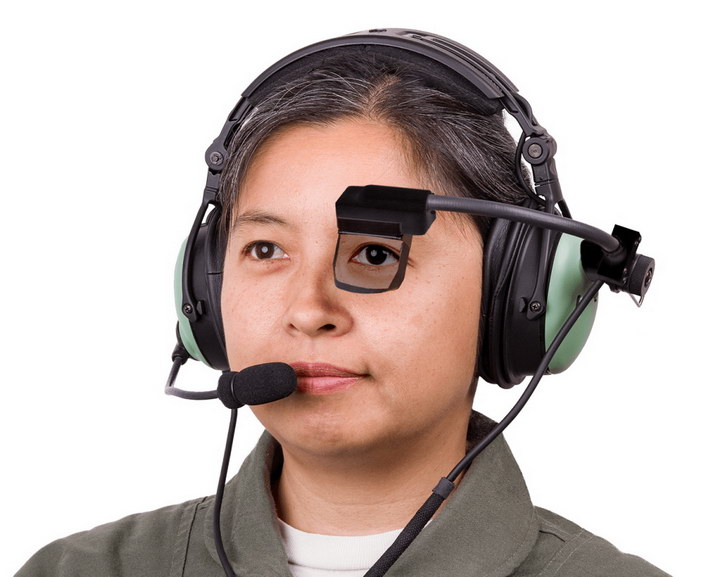 PilotVision AR HMD from SA Photonics is intended for civilian pilots. (Credit: SA Photonics)
PilotVision AR HMD from SA Photonics is intended for civilian pilots. (Credit: SA Photonics)
“PilotVision clips on to a set of communications headgear and provides unmatched situational awareness via high brightness symbology over a very large 62-degree field of view, with almost zero peripheral obscuration. When not needed, PilotVision can be rotated up to its stow position, just like a boom microphone. PilotVision was designed by the same team that designed the F-35 Joint Strike Fighter head mounted display as well as the JHMCS head mounted display used on the F-15, F-16 and F/A-18 fighter jets, but sells for a fraction of the price.”
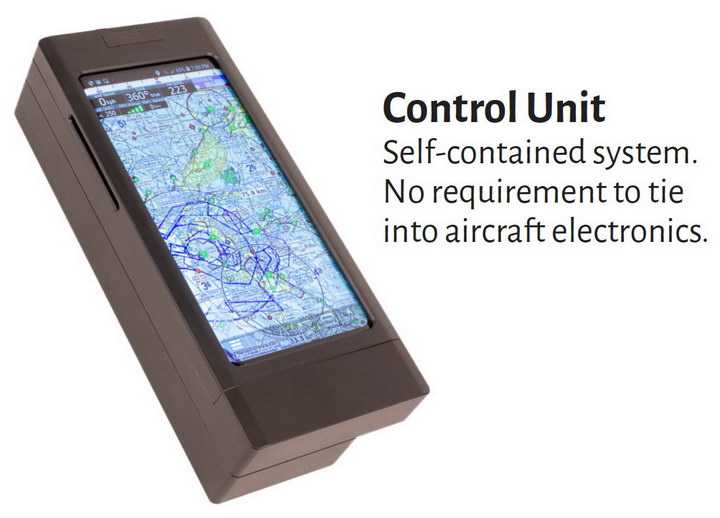 Control Unit for the iFly GPS system. (Credit: SA Photonics)
Control Unit for the iFly GPS system. (Credit: SA Photonics)
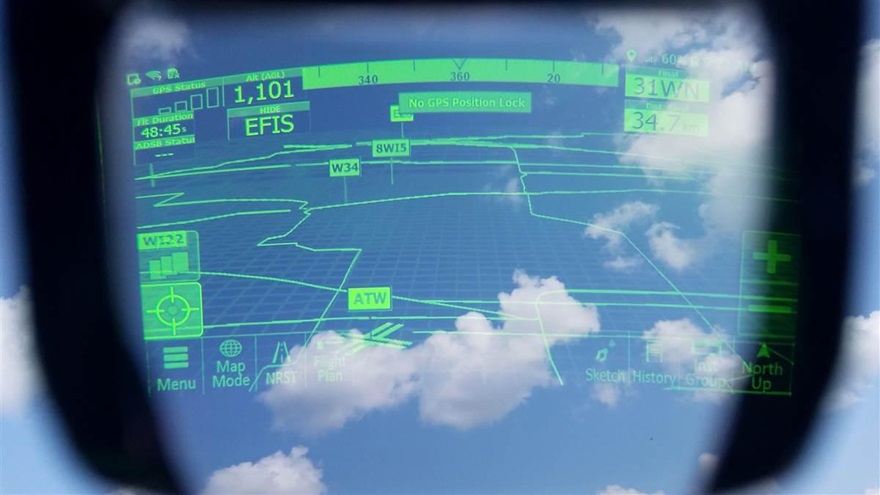 View through the PilotVision HMD (Credit: Mike Collins)
View through the PilotVision HMD (Credit: Mike Collins)
The version of the PilotVision system shown at EAA is a pre-production unit, not a product. While not explicitly stated, I assume the PilotVision technology is similar to other SA Photonics HMDs, with an OLED microdisplay and a combining prism. “I actually designed this eyepiece for the next-generation Apache helicopter,” Mike Browne, general manager of vision products for SA Photonics told Mike Collins of the Aircraft Owners and Pilots Association (AOPA) at Oshkosh. The first versions of the system are expected to be delivered to the Air Force for use by transport pilots in March, 2020 and the consumer version should be available in the summer of 2020. “Initially the price is going to be fairly high—about $10,000,” Browne said. “But the price will come down as production goes up. That’s what the Air Force wants.”
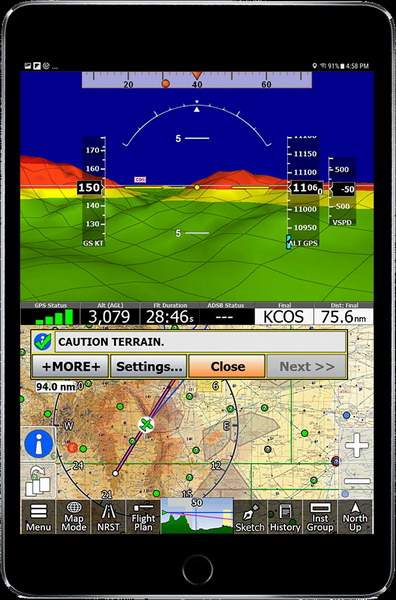 iFly GPS app in the synthetic vision mode and displaying a terrain alert. (Credit: Adventure Pilot)
iFly GPS app in the synthetic vision mode and displaying a terrain alert. (Credit: Adventure Pilot)
PilotVision has a wired connection to its control box, which is based on Adventure Pilot’s iFly GPS system. iFly GPS, in turn, is an aviation navigation app that is available for iOS, Android and Windows 10. iFly GPS does not require the use of a HMD like PilotVision and can be used by pilots on their phones or tablets, using the phone or tablet display. The control box and the iFly GPS host do not communicate with the normal navigation and other instruments installed in the aircraft cockpit such as the altimeter or turn and bank indicator. As such, it requires no installation other than clipping the HMD system onto the headphones. At Oshkosh, a Samsung phone running iFly GPS drove the display. According to Browne, a tablet will be used for later versions.
The PilotVision system grew out of SA Photonics’ traditional military HMD business coupled with the desire to address civilian markets. The PilotVision system development was aided by a grant from AFWERX, an Air Force technology accelerator program designed to bypass traditional military bureaucracy to allow both small and large entities to develop ideas that could be of value to the Air Force. This is not for large projects – the total AFWERX budget is $11M. According to Browne, this Air Force support shortened the development cycle for PilotVision from a normal five to six years to 18 months.
The SA Photonics SA-147/s achieves its very wide FOV by using two OLED microdisplays and two prisms per eye. In the insert, the two prisms can be seen clearly. (Credit: SA Photonics)
At last November’s Interservice/Industry Training, Simulation and Education Conference (I/ITSEC), SA Photonics had introduce another high-performance HMD, the SA-147/S Wide field of view (FOV) Augmented Reality Display System (WARDS) helmet mounted display. This HMD was developed for the US Army and is said to have the widest field of view of any available HMD, 147° diagonal. The system is full color and can display both symbiology and full-motion, full color video.
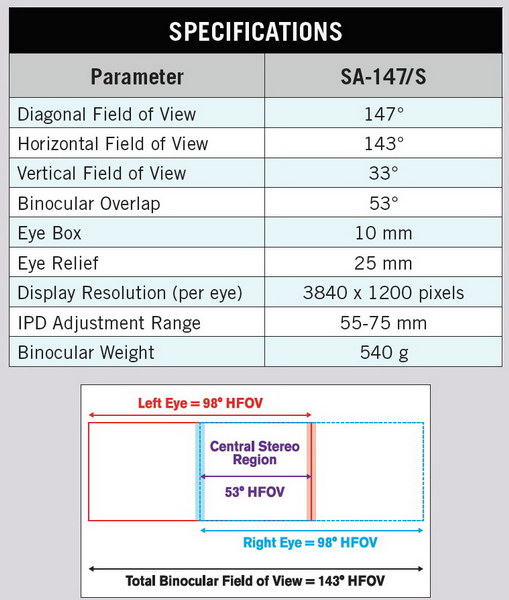 Properties of the SA-147/S HMD. Top: Specifications. Bottom: arrangement of the FOV for the four microdisplays, showing the overlap in the central stereo region. (Credit: SA Photonics)
Properties of the SA-147/S HMD. Top: Specifications. Bottom: arrangement of the FOV for the four microdisplays, showing the overlap in the central stereo region. (Credit: SA Photonics)
The SA-147/S achieves this very wide FOV by using two 1920 x 1200 full color OLED microdisplays per eye, each with its own combining prism, for a total of four microdisplays and four prisms. As shown in the photo, each eye, when looking straight ahead, looks through its own prism, allowing the display of stereo images in the central region of the FOV. When the eyes look left or right, only one eye is looking through a prism and the displayed image is showed to only one eye and the image is monocular. This is actually a good match for normal, unaided human vision where the human vision is binocular in the central region where both eyes are looking nearly straight ahead. When looking to the side, for example, to the left, only the left eye can see anything and the right eye does not cover that region.
The SA-147/S can either be used in a fixed base location or in a man portable configuration. For a fixed base application, it can be driven by any computer image generator with a minimum of two 3840 x 1200 @ 60 Hz video channels. For a man portable application, the SA-147/S can be paired with a SA Photonics battery-powered backpack computer or Augmented Reality Processor (ARP) with natural scene-based head tracking.
The SA-147/s wasn’t the only HMD product or technology that SA Photonics demonstrated at I/ITSEC. Other products and technologies shown included:
- SA-83/S AR HMD with head tracking demonstrating a fly-over of a San Francisco CATI XiG database.
- SA-62/S AR HMD with head tracking in Unity.
- SA-62/SM AR eyewear displaying imagery from a Samsung S5 smartphone overlaid with the real world.
- SA-92 DV binocular HMD with head tracking in a flight simulator showing the increased situational awareness with a wide FOV HMD.
- New high brightness OLED-based AR displays for outdoor conditions.
- SA-92/S ANVIS mounted for fixed wing (HGU-55/P) and rotary wing (HGU-56/P) helmets.
 A VR version of the EAA museum was available for visitors to AirVenture. (Credit: EAA)
A VR version of the EAA museum was available for visitors to AirVenture. (Credit: EAA)
By the way, attendance at the EAA AirVenture event in Oshkosh, Wisconsin, makes major electronics trade shows like CES look small by comparison. According to the EAA, which was founded in 1953, there were 642,000 visitors at AirVenture this year, compared to the CES 2019 attendance of 180,000+. Of course, the EAA AirVenture event is open to the paying public and is primarily an air show, not a trade show. If you like aviation photographs, check out the 2,830 photos in EAA’s Flickr album. I thought about posting one in this article, but how could I have chosen only one? While the EAA said they had more than 800 exhibitors, this can’t compare to the 4,500 exhibiting companies at CES 2019. The AirVenture exhibitors mostly had products that targeted the private pilot. This made it a good place for SA Photonics to introduce a new product like PilotVision. – Matthew Brennesholtz

